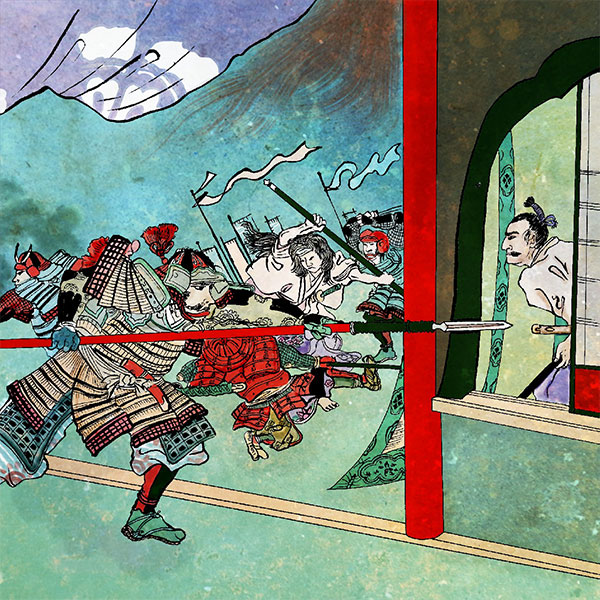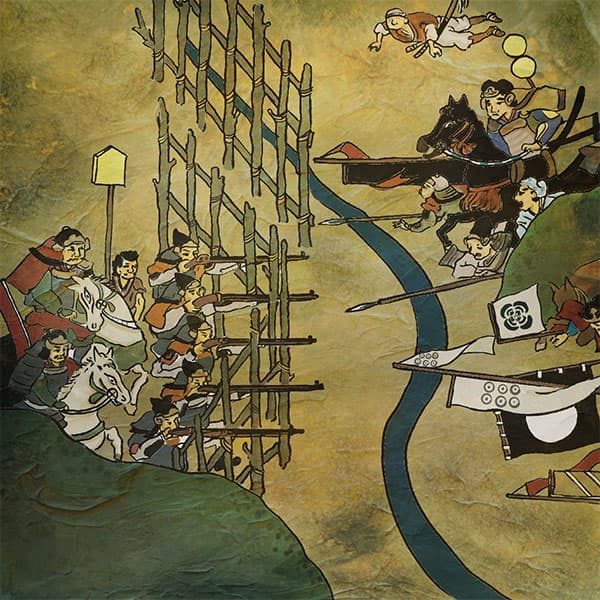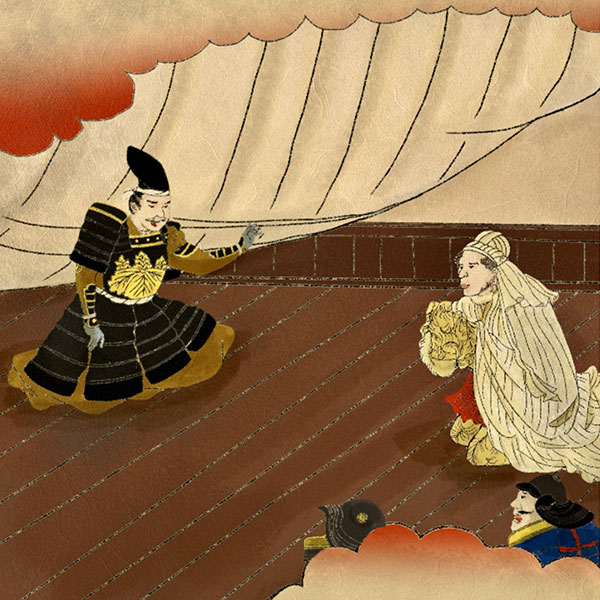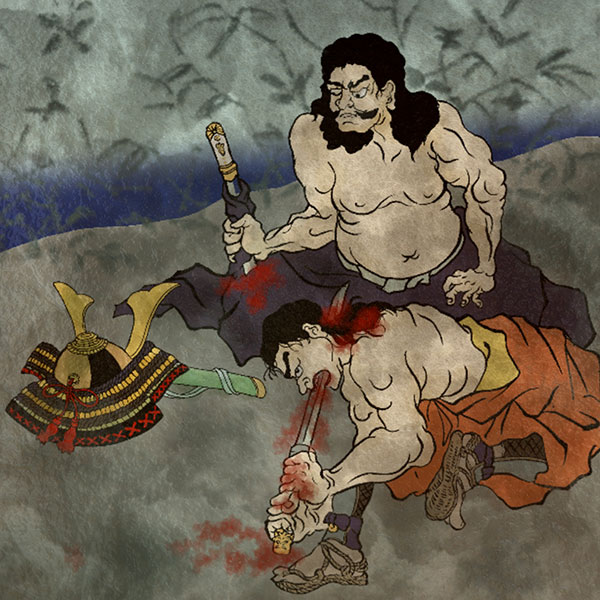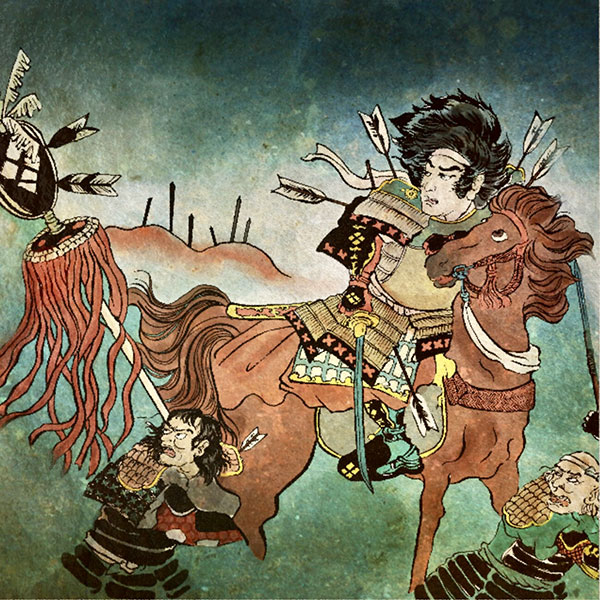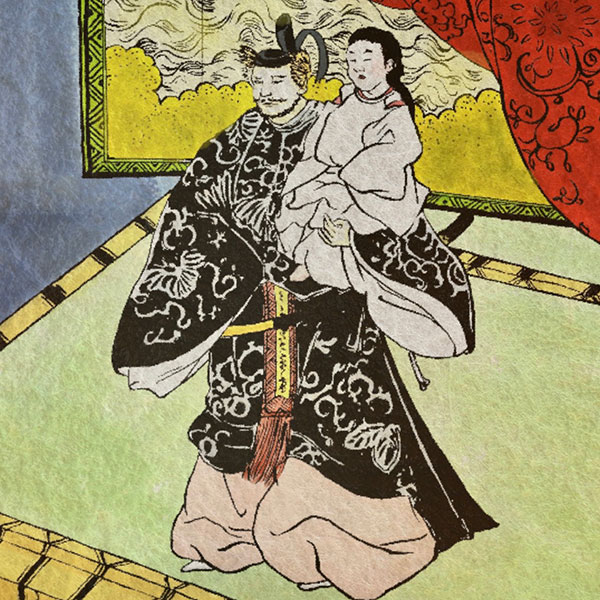Nobutada Oda (2/2)The heir who died following his father, Nobunaga
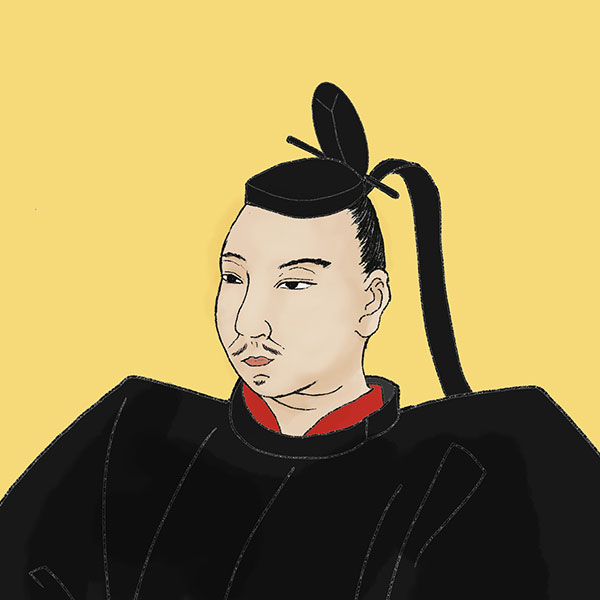
Oda Nobutada
- Article category
- biography
- name
- Oda Nobutada (1557-1582)
- place of birth
- Aichi prefecture
- Related castles

Gifu Castle
- related incident
When Nobutada learned that Akechi Mitsuhide had attacked Honno-ji Temple, where Nobunaga was staying, he headed to the temple to offer aid, but when he received news that his father, Nobunaga, had committed suicide, he moved to Nijo-shingosho (one of the Imperial Palaces), the residence of Crown Prince Masahito, together with his half-brother Tsuda Genzaburou (Oda Genzaburou Nobufusa), Kyoto Shoshidai Murai Sadakatsu, senior vassal Saito Toshiharu and other close aides to intercept Mitsuhide. After allowing Prince Masahito to escape, Nobutada barricaded himself there with the few soldiers he had on hand.
However, when Akechi's army was attacked by Sadaoki Ise, Oda Nobutada thought he had no chance of winning against the large number of enemy soldiers and committed suicide on the spot. He was 26 years old when he died. At that time, Kamata Shinsuke performed the beheading, and it is said that Nobutada ordered "to remove the boards on the perimeter of the Nijo Palace to hide my body."
Although they were in Kyoto, they did not arrive in time to enter Honnoji Temple, and instead Fukutomi Hidekatsu, Sugaya Nagayori, Inoko Hyosuke, and Dan Tadamasa rushed to the Nijo New Palace and fought against Akechi's forces, led by Saito Toshiharu. However, after Nobutada committed suicide, Saito Toshiharu stabbed himself to death (a loyal death) saying, "For whose sake should I now sacrifice my life?"
Afterwards, Akechi's forces desperately searched for Nobutada's head, just like his father's, but it was never found.
According to the "Yorinin Botakuki" and "Renseiin Kiroku," the specific details of the battles during the siege at Nijo Shingosho are that Nobutada personally wielded his sword and cut down enemy soldiers. At the time, Nobutada had a young page named Shimokata Yasaburo, who fought bravely and was wounded in his left leg and side, with his intestines protruding. When Nobutada saw him, he is said to have remarked, "You are a brave man. I cannot reward you in this life, but I will reward you in the next life, if I may." Yasaburo was so moved by Nobutada's words that he ran into the enemy with a smile and was killed in battle.
At this time, Nobutada sent a messenger to Matsuhime, who had fled to Hachioji after the downfall of the Takeda clan, in an attempt to invite her to Myokaku-ji Temple. She was said to have already been traveling, but they were unable to meet again, and upon hearing the news of Nobutada's suicide, Matsuhime returned to Hachioji, became a nun, and held a memorial service for Nobutada at Shingen-in Temple together with the Takeda clan. Some historical documents state that Matsuhime was actually the birth mother of Nobutada's son, Sanboshi (Oda Hidenobu).
If Nobutada had immediately fled Kyoto when he learned that his father, Nobunaga, had committed suicide at Honnoji Temple, it is possible that he would have unified the country under his control, and it is unclear why he barricaded himself inside the Nijo-Shingosho Palace and fought there. However, it can be said that Nobutada's decision led to the later Kiyosu Conference, marking a turning point in the era in which Toyotomi Hideyoshi unified the country.
Later Oda Clan
After the death of his father, Oda Nobunaga, and his eldest son, Oda Nobutada, the issue of succession to the Oda clan was resolved with Nobunaga's second son, Oda Nobuo, and third son, Oda Nobutaka, each claiming the position of successor and refusing to back down. Toyotomi Hideyoshi took advantage of this opportunity and Katsuie, Hideyoshi and other senior retainers agreed to have Nobunaga's eldest grandson, Sanboshi, act as his representative, and both sides came to an agreement.
It is said that Katsuie could not compete with Hideyoshi's achievements in the funeral battle. The Tamonin Diary also states that "the general result remained with Hashiba." On the other hand, the Kawazumi Taikoki also has a story that Hideyoshi supported Sanboshi, while Shibata Katsuie supported Nobutaka as his successor, leading to a conflict, Hideyoshi left the table, and the remaining three men discussed the matter, with Katsuie putting down his spear and deciding to support Sanboshi as head of the family.
Four days later, the four senior vassals were to meet in person, during which Hideyoshi tamed Sanboshi with a toy. It is recorded that Hideyoshi then appeared at the meeting holding Sanboshi, and the three senior vassals then prostrated themselves before him.
As a result, Sanboshi inherited the headship of the Oda clan, with his uncles Oda Nobukatsu and Nobutaka as guardians, Hori Hidemasa as tutor, and four senior vassals, Hashiba Hideyoshi, Shibata Katsuie, Niwa Nagahide, and Ikeda Tsuneoki, as regents, as assistants. Tokugawa Ieyasu also participated in this system by cooperating with it.
Grave of Oda Nobutada
There are several, but the one that is considered to be the official gravesite is Amidaji Temple (Kamigyo Ward, Kyoto City). When Nobunaga committed suicide in the Honnoji Incident on June 2, 1582 (Tensho 10), the head priest Seigyoku is said to have personally traveled to Honnoji Temple during the fighting, brought back Nobunaga's ashes, and built a grave for him. It is said that he later also collected the remains of Oda Nobutada from the Nijo-Shingosho Palace and built a grave for him next to Nobunaga's grave. In addition, many unknown victims who died in the Honnoji Incident are buried at this temple and memorialized.
In 1585, following Toyotomi Hideyoshi's remodeling of Kyoto, it was moved to its current location. On November 25, 1675, a fire broke out, destroying Nobunaga's wooden statue, weapons, tools and other relics. The remains were moved to Daiun-in Temple, but there was another fire there and now very little remains.
Mori Naganari, the fourth feudal lord of Tsuyama Domain in Mimasaka Province, held a memorial service every year on June 2nd, and is said to have also held a memorial service for the 100th anniversary of Nobunaga's death, but after the Mori family was abolished, donations of tea and other items ceased. In 1917 (Taisho 6), an imperial envoy from the imperial family visited, and Nobunaga's grave at this temple was officially recognized as the "Main Mausoleum of Oda Nobunaga."
Reread the article on Oda Nobutada
- related incident

- WriterTomoyo Hazuki(Writer)I have loved history and geography since my student days, and have enjoyed visiting historical sites, temples and shrines, and researching ancient documents. He is especially strong in medieval Japanese history and European history in world history, and has read a wide range of things, including primary sources and historical entertainment novels. There are so many favorite military commanders and castles that I can't name them, but I especially like Hisashi Matsunaga and Mitsuhide Akechi, and when it comes to castles, I like Hikone Castle and Fushimi Castle. Once you start talking about the lives of warlords and the history of castles, there's a side of you that can't stop talking about them.


